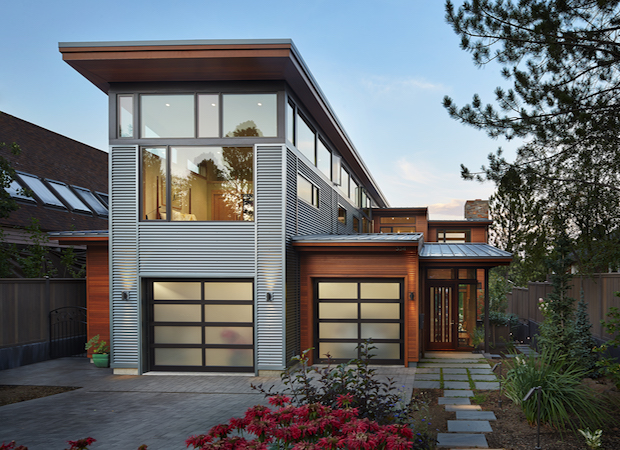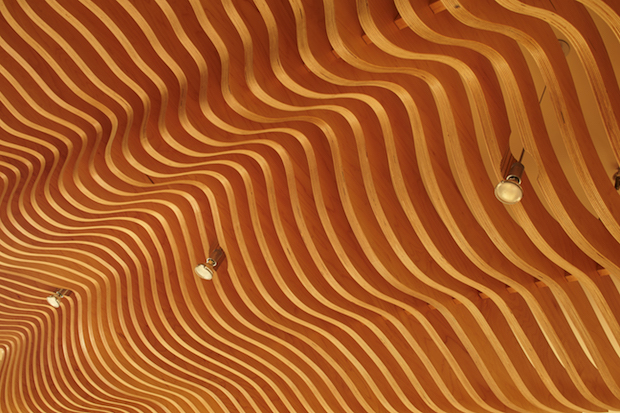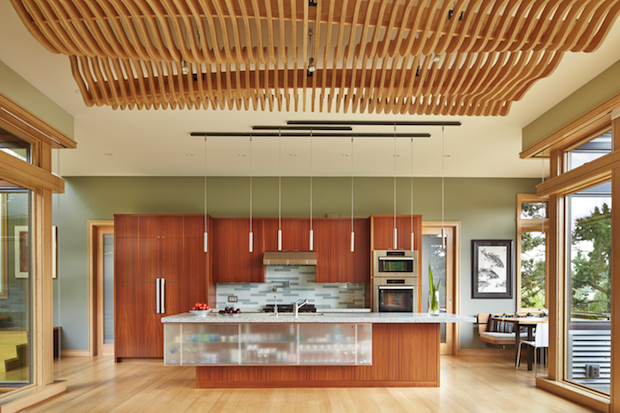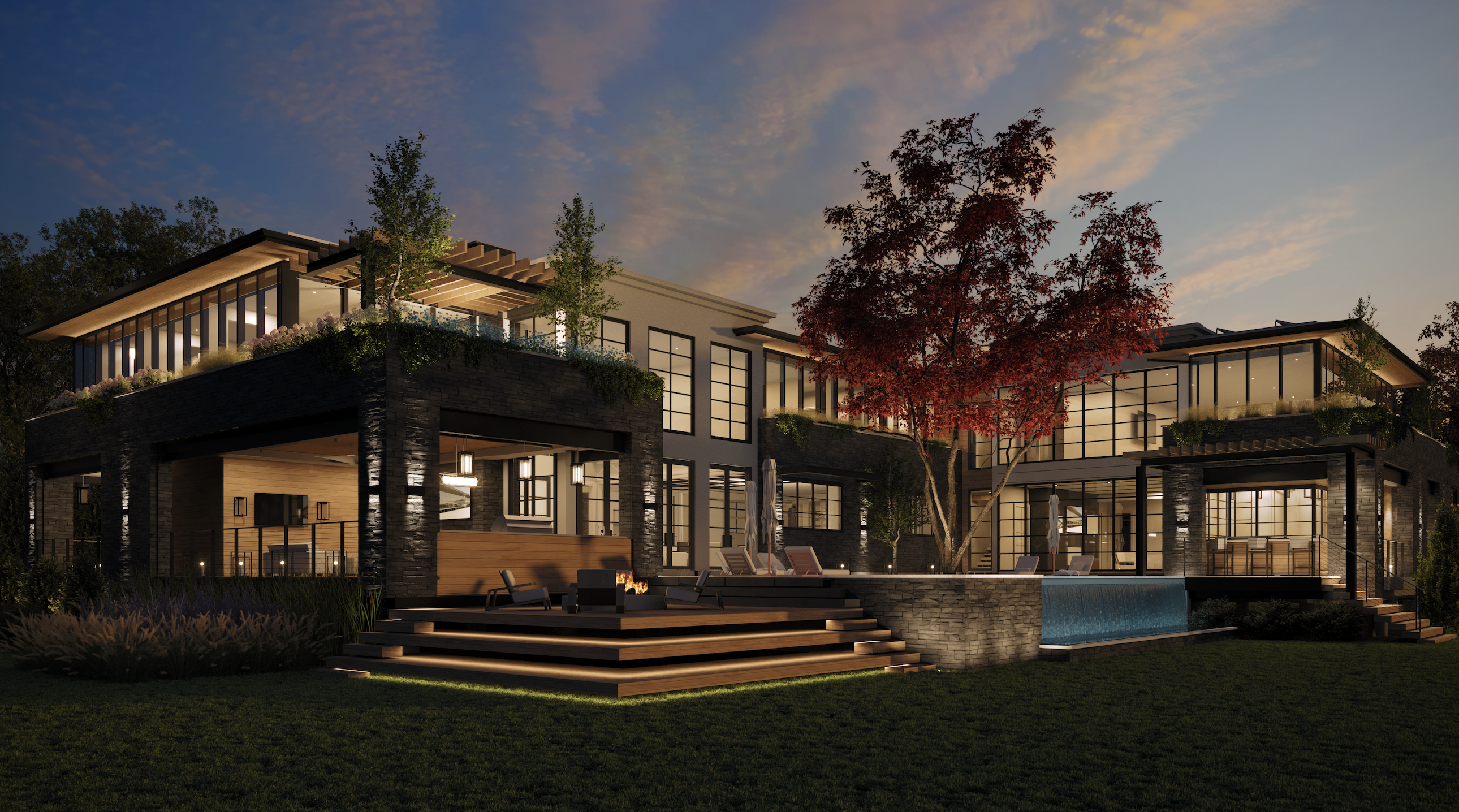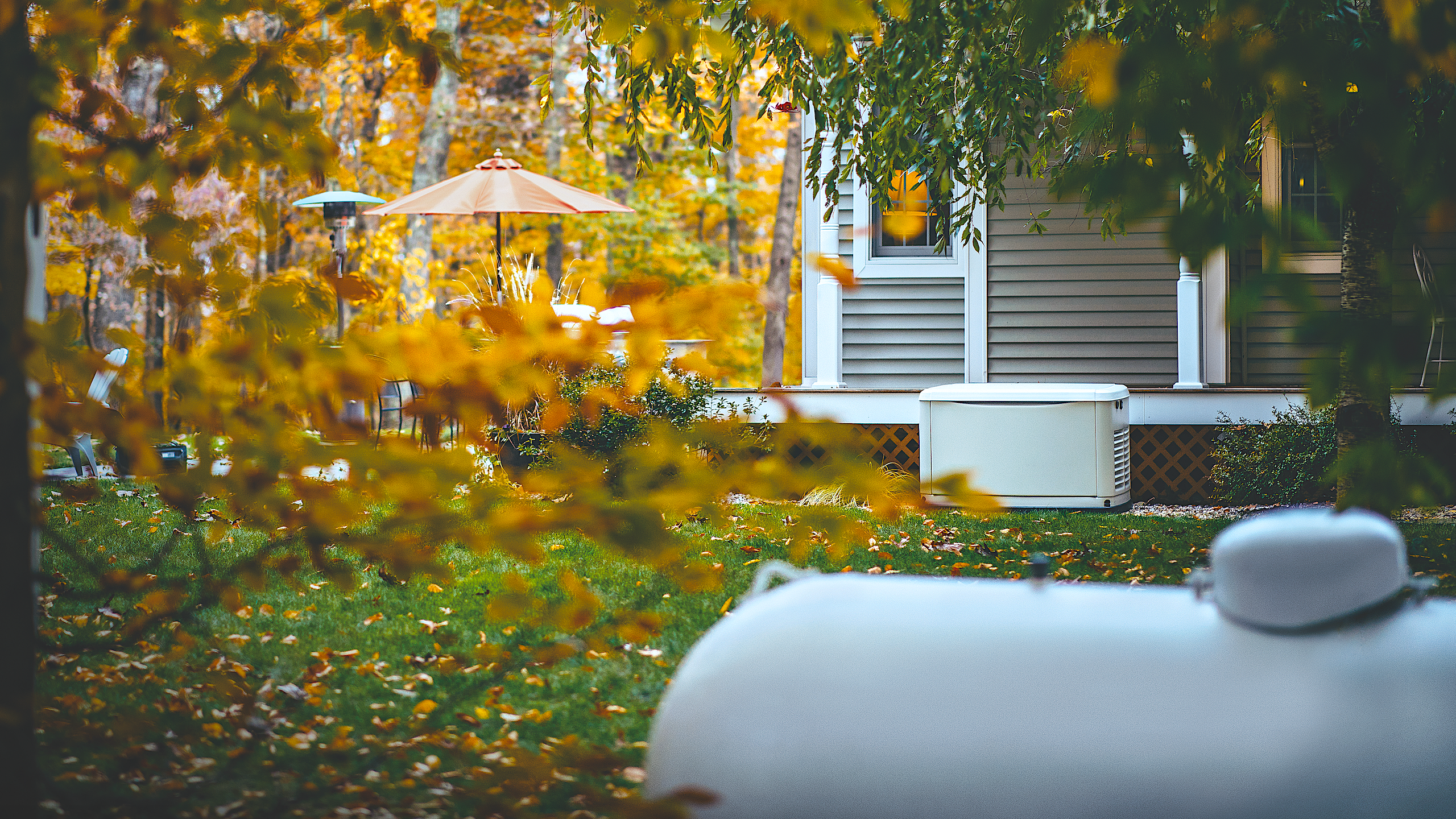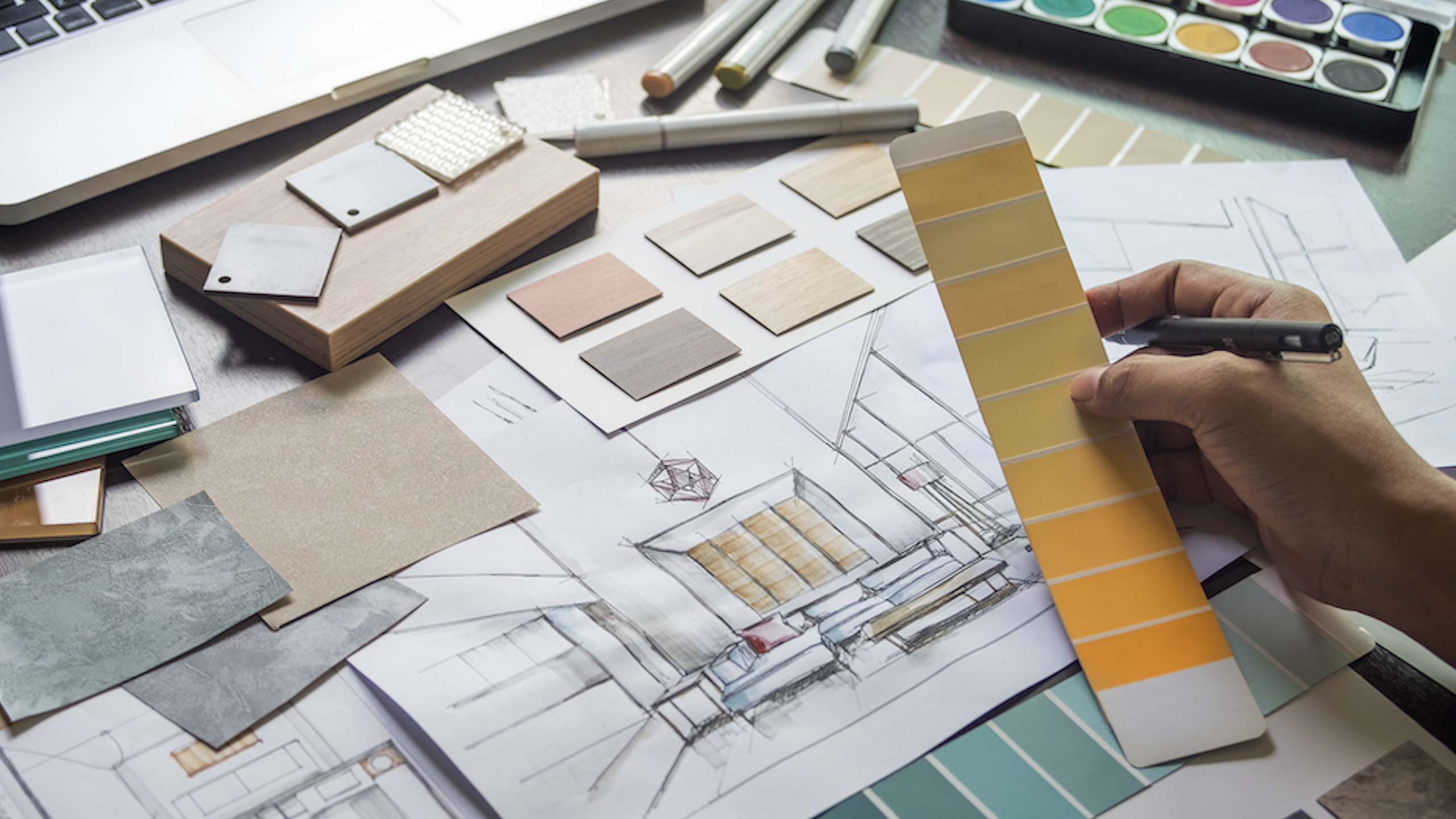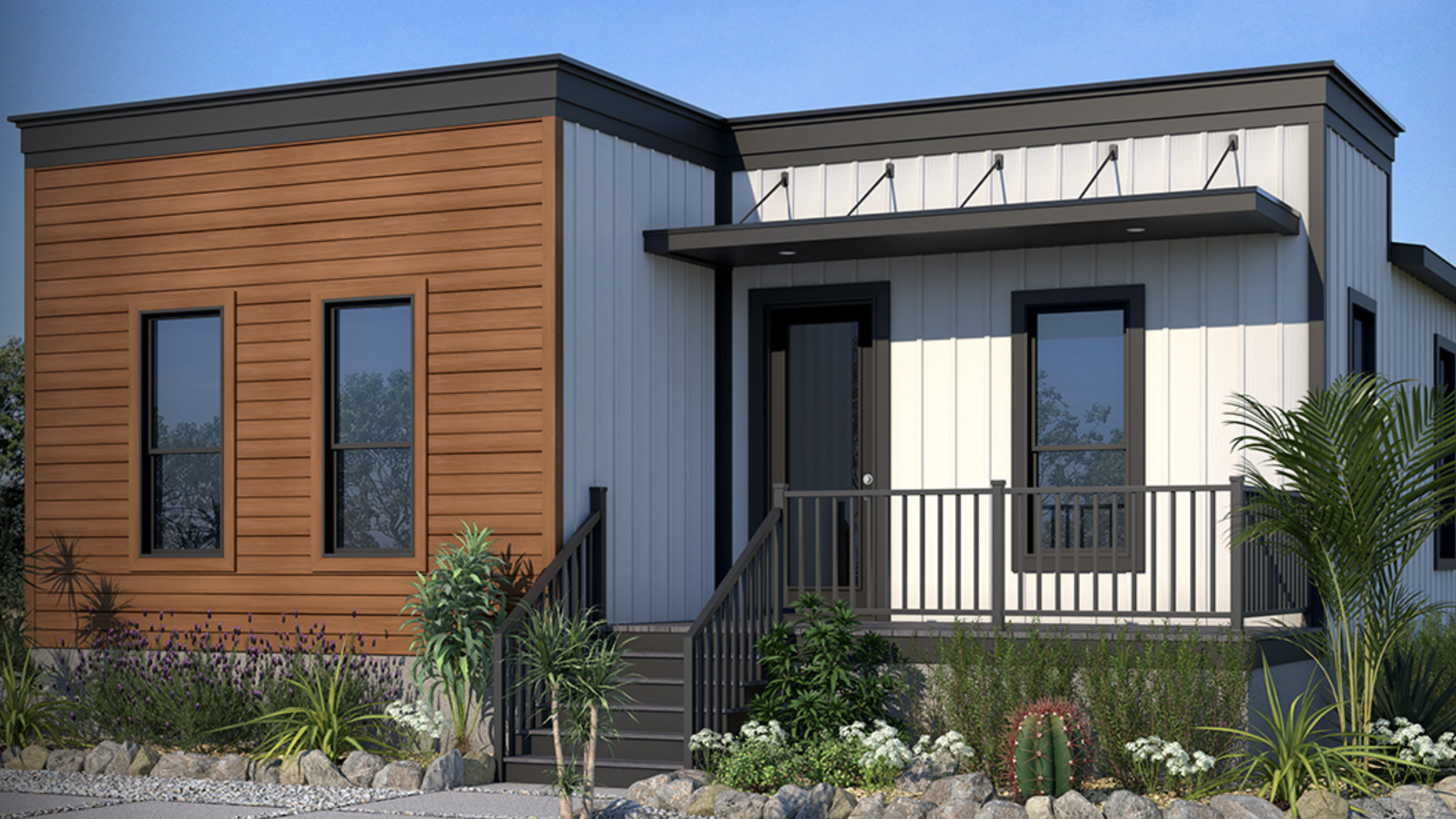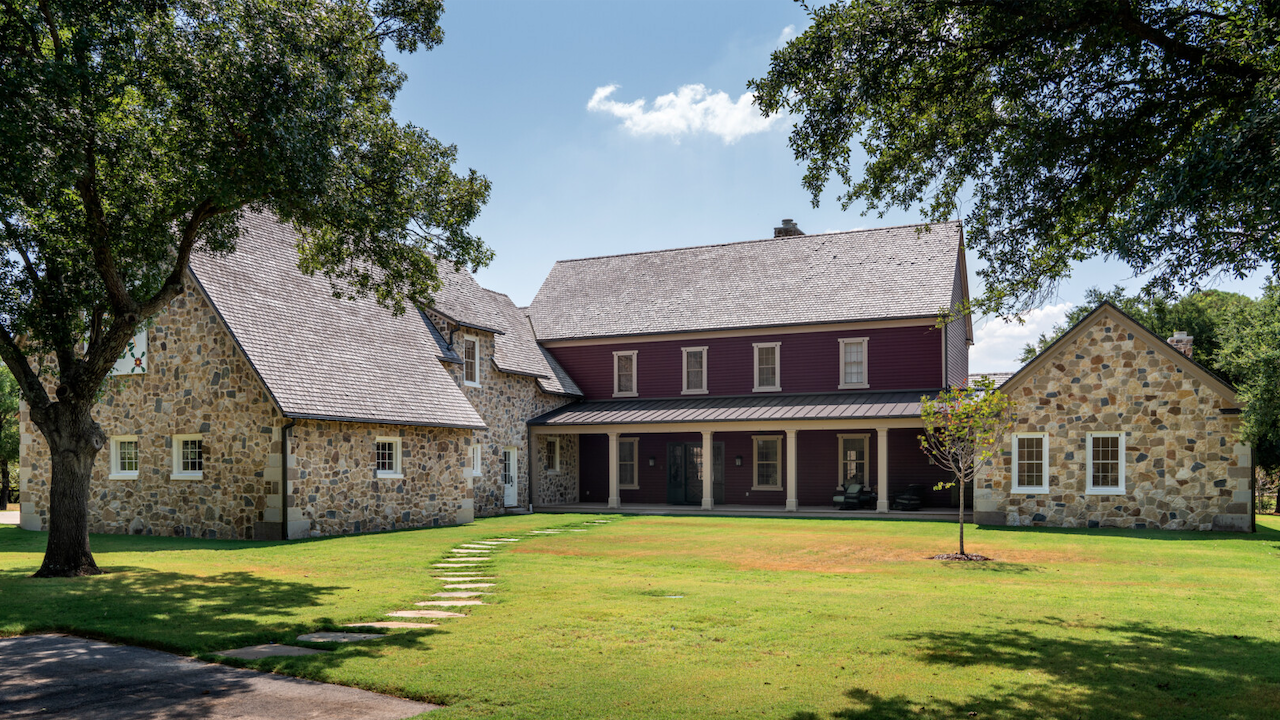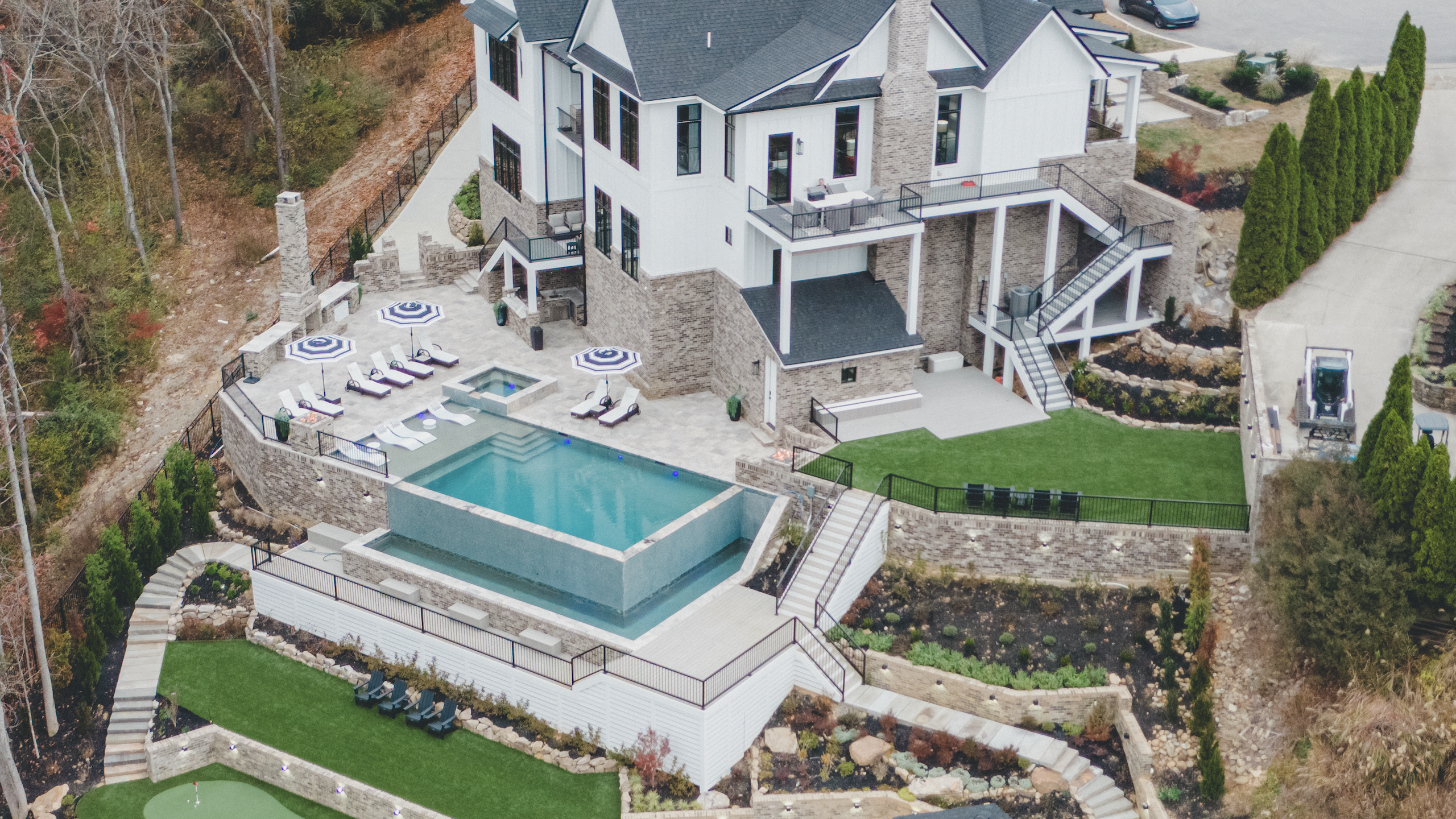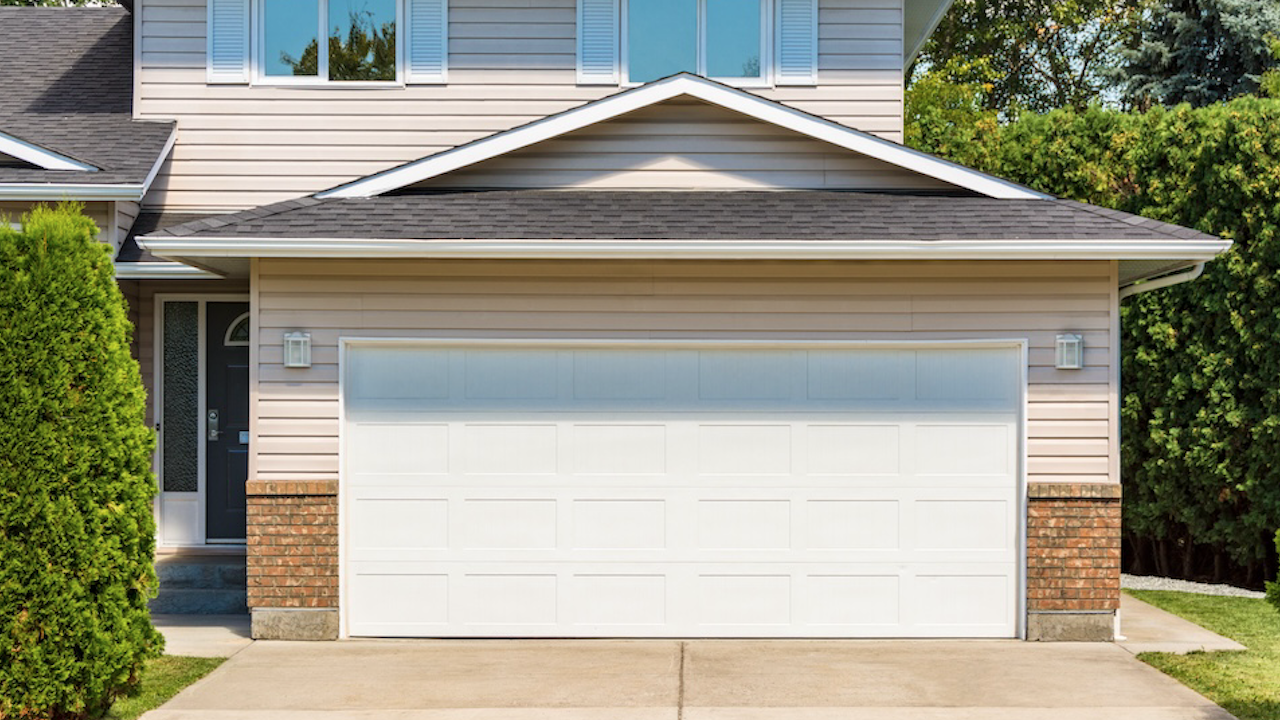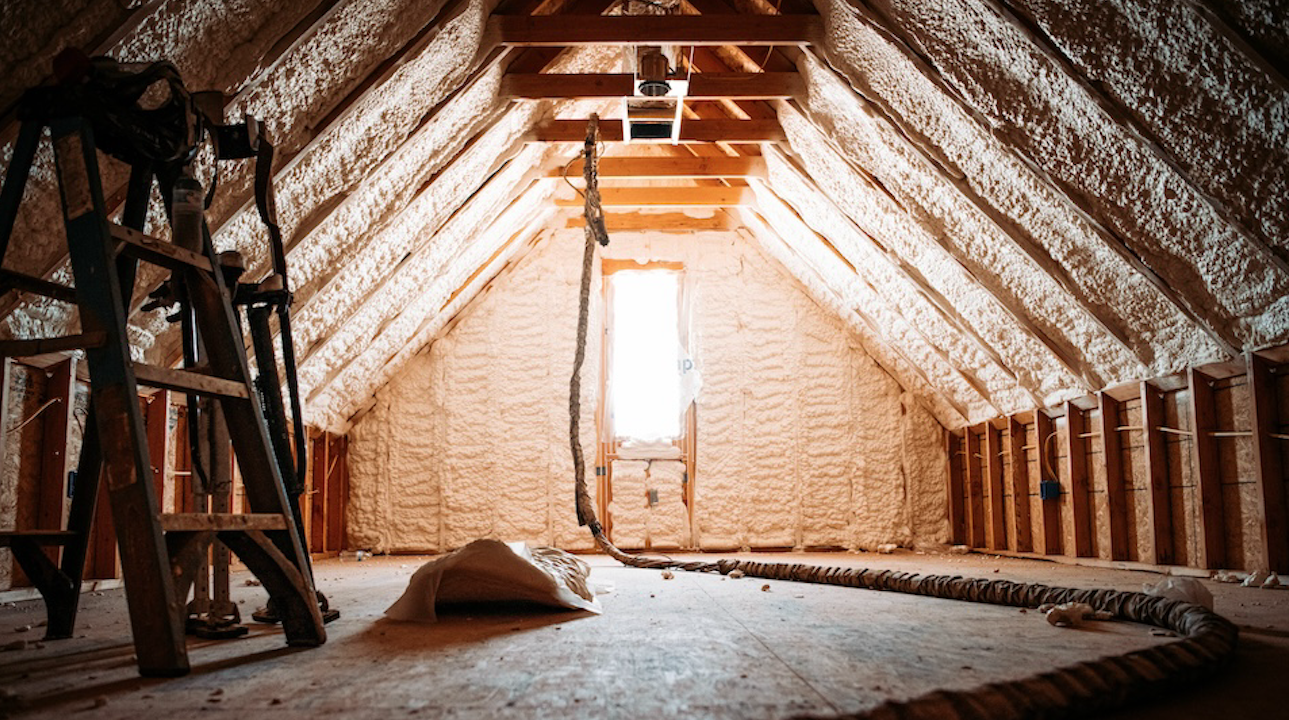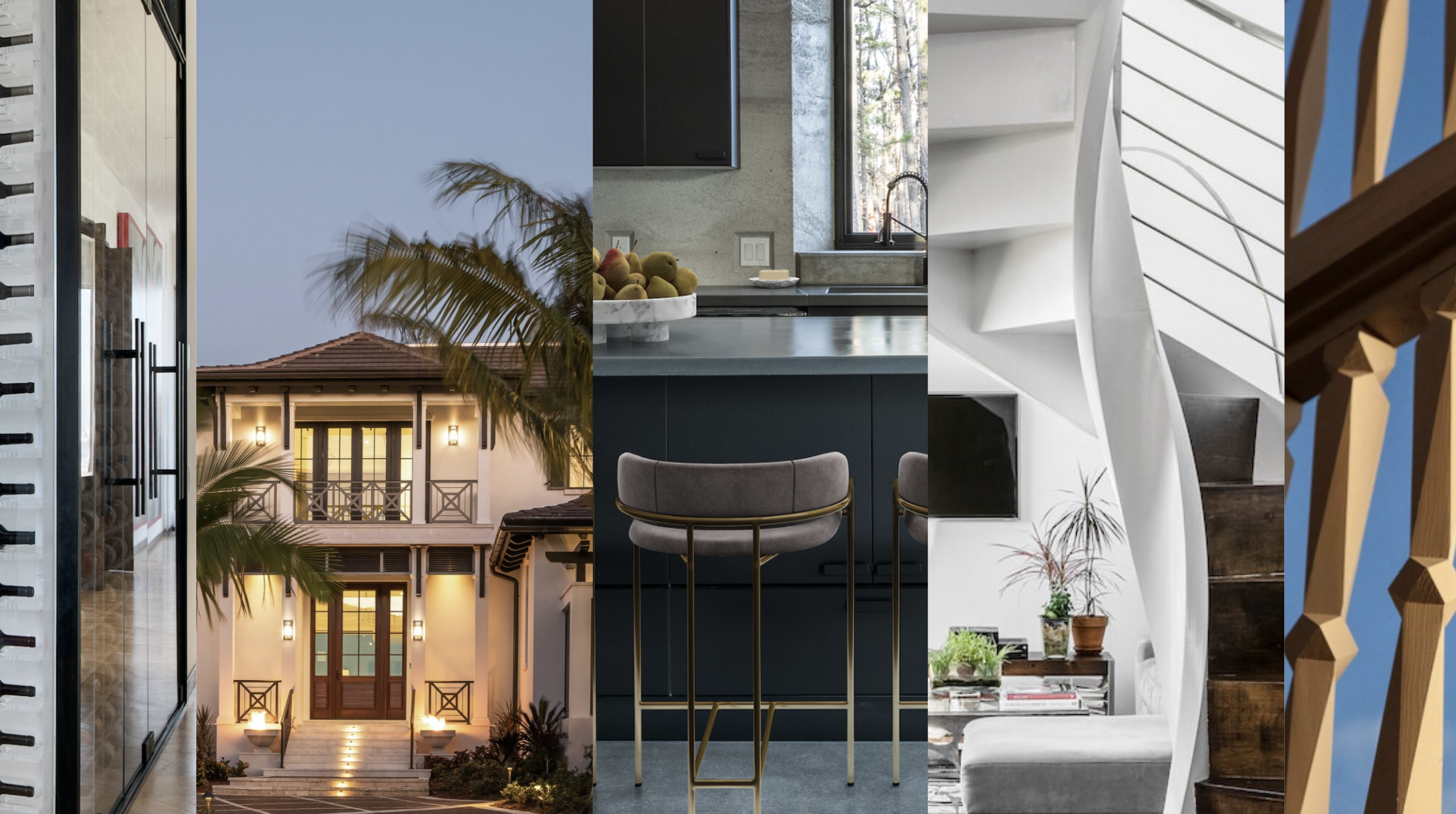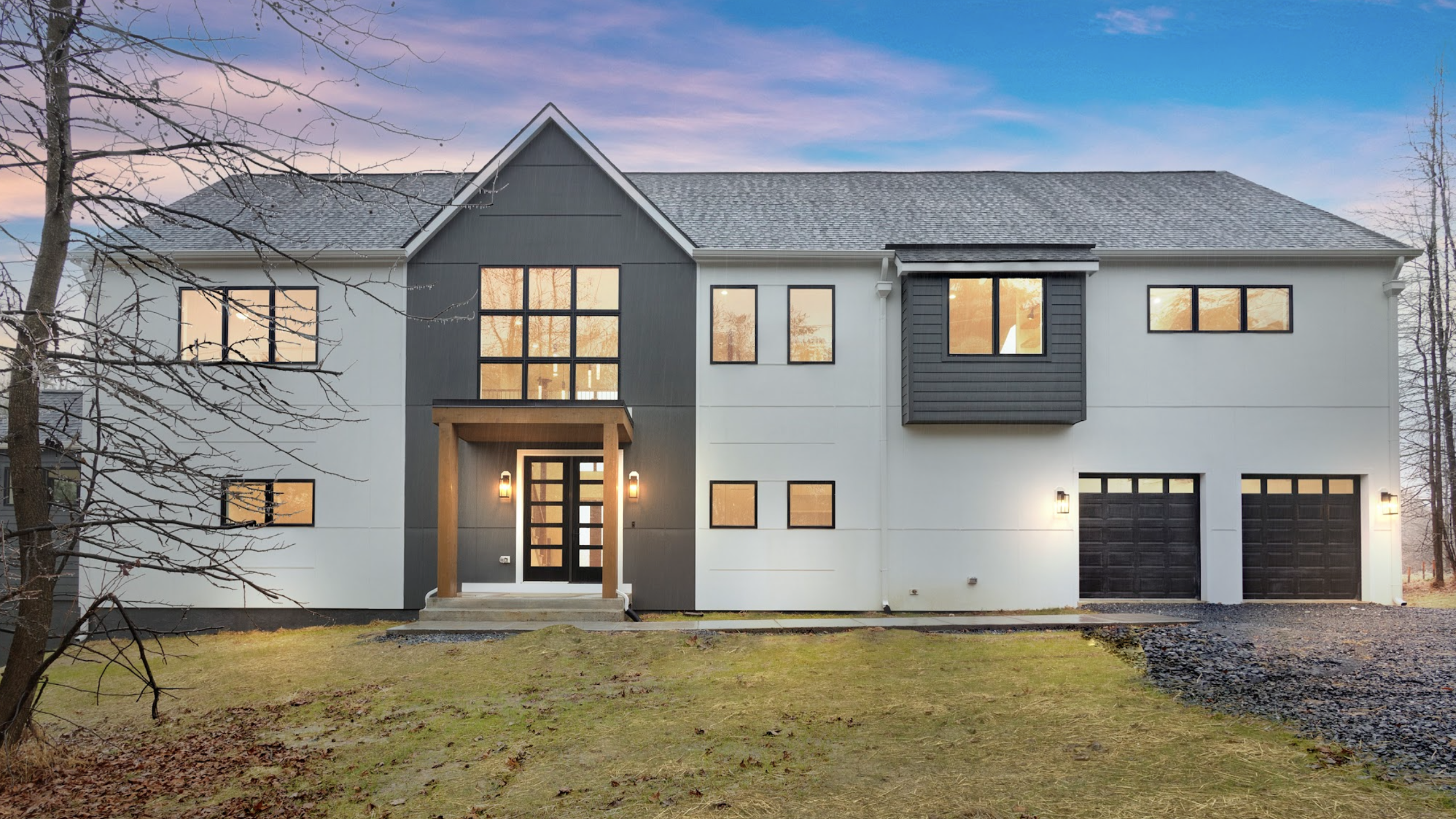Empty-nester homes offer clients a rare chance to make a space-efficient dwelling that checks only their own design boxes, without having to consider the competing needs of children. These clients are in a unique position to take all of the opportunities good design has to offer. And, as the following two projects show, the homes often connect with nature in a deeper way.
River View
The town of Bend sits in the high desert of central Oregon along the Deschutes River, a magnet for water lovers. Architect Nils Finne’s clients, Bob and Deborah, deemed it the ideal place to retire, and the outdoorsy Portland transplants asked the Seattle architect to create a light-filled home that takes advantage of its perch 25 feet above the river. The 2,945-square-foot house offers a sense of prospect and refuge, and its wall-size doors are an open invitation to the river.
“During summer I’d call it a highway of water fun,” Finne says of this stretch of river. “There’s a flotilla of inner tubes, rafts, canoes, swimmers, and paddleboarders; it’s quite the scene.”
Finne managed to make something poetic out of the site’s constraints, which include a narrow 50-foot-wide by 119-foot-long lot, a volcanic rock outcrop and precipitous slope to the river, and close neighbors on both sides. The clients got a variance to push the house about 7 feet into the front setback to keep the rock outcrop exposed in the back and maintain a more deferential relationship to the river.
With the street on the west side and the river to the east, the house wraps around a south-facing landscaped courtyard, which scoops direct light into the center of the transparent living space. A long, skinny, two-story volume runs along the northerly edge—a datum line for the lower modules placed against it. This long volume, clad in horizontal corrugated metal, cantilevers the farthest toward the river. It houses one of the two garages, a corridor, and the kitchen on the first level; and two bedrooms, a laundry, and the master bath upstairs. The abutting red-cedar-clad lower volumes face each other across the courtyard, with the massing on the street housing another garage and the entryway, and the river-facing volume containing the kitchen and living room downstairs, and the master bedroom and study above.
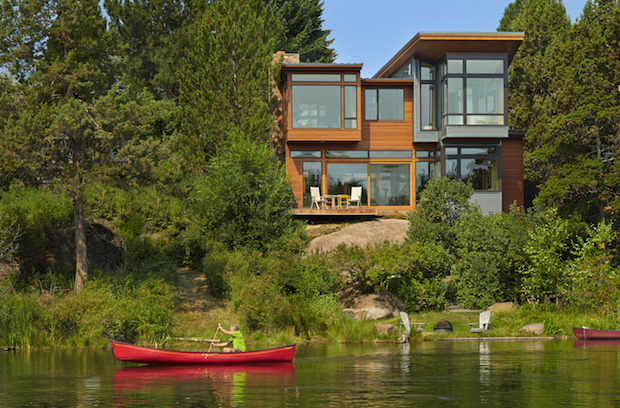 "It's a highway of water fun," says architect Nils Finne of a stretch of the Deschutes River in Bend, Ore.,, where his clients chose to retire. Built on a steep site and a volcanic outcropping of rock, the home's design maximizes its relationship to the river.
"It's a highway of water fun," says architect Nils Finne of a stretch of the Deschutes River in Bend, Ore.,, where his clients chose to retire. Built on a steep site and a volcanic outcropping of rock, the home's design maximizes its relationship to the river.
The volumes and their wavy rooflines, like cut-apart ribbons, keep the house from overwhelming the narrow lot. “These ribbon-like volumes create a stronger sense of scale,” Finne says, “and the undulating roofs suggest the flow of the river.”
As on the exterior, interior materials are skillfully crafted and used in unexpected ways. There is a 1 1/2-foot elevation change from the front to the back, which results in generous 12-foot ceilings in the living spaces. This allowed Finne to suspend two undulating wood panels, which echo the river beyond, from the ceiling over the kitchen island and in the living room. They’re also a curvaceous foil to the boxy living and dining areas. “I often create living spaces with a sculptural roof form when there is no second floor above the living area,” he says. “Because I couldn’t do that—the master bedroom is above the living room—I introduced panels that drop down and form a sculptural river landscape that ripples above you when you’re sitting in those spaces” (see sidebar).
New Wave
The undulating ceiling panels that connect the dining room and kitchen offer a contrast to the box-like nature of the spaces. The panels, suspended from the ceiling by aircraft cables, are 6 feet long and 3 1/2 feet wide.
Architect Nils Finne, principal at Finne Architects, in Seattle, sketched out the pattern, modeled it in 3-D, and created an elaborate instruction manual showing where to cut each piece. The 60 unique slats were cut from a sheet of veneer maple plywood using a computer numerical control (CNC) machine and mounted 2 inches apart on perpendicular runners that thread through the slats, bending up and down to follow the contours.
Finne’s client, a civil engineer, picked up the numbered pieces from the milling shop in Portland, drove them to the house, put them on the floor, and assembled them himself. “I’ve never had a client who was as technically capable as Bob,” Finne says
The two fireplaces, in the living room and the upstairs study, share a chimney and a vocabulary of local stone and steel. The stones’ horizontal cut ties into the horizontality of the house, and their earthy colors reflect the high desert region. A local steel fabricator, Ponderosa Forge, made the sculptural fireplace mantels and the blackened steel staircase. Another local company, Eco Crush, made the kitchen counters out of a terrazzo-like cementitious matrix with pieces of embedded glass.
Finne kept the glass theme going on the sapele mahogany kitchen island, which contains a display case made of low-iron textured glass. “Behind that glass we have some LED lighting, so the glass case glows like a piece of ice,” Finne says, and the kitchen backsplash is a variegated glass tile.
During construction, the riverfront lot made staging difficult. “There were some big steel members in the great room and roof on the river side of the house, and we had to erect everything by hand because we couldn’t get machines in to do that,” says Tim Duey, who built the house with his brother, Trevin Duey (they now have separate companies). “We had to dump our lumber up front. The most difficult part was organizing the front end of the house and carrying all the wood to the river to build it.”
Empty nesting touches on a range of home design issues, one of which is how much exterior maintenance retirees are willing to do. Finne’s affinity for wood prompted a frank discussion about upkeep with his clients. “They were comfortable with the idea that they’d have to monitor and maintain the stain,” he says. “It made it more palatable that half of the house is covered in metal.”
And if an active lifestyle is the key to aging well, the riverside house is the perfect vessel for these empty nesters. “Bob and Deborah are very outdoors-oriented, from skiing to canoeing to hiking,” Finne says, “and the outdoor environment is very much integrated into this house.”
 Photos: Bill Timmerman
Photos: Bill Timmerman
Cold Comfort
Most empty-nest projects have a mandate to downsize. They’re laser-focused on creating just-so spaces where the owners will spend most of their time and letting gratuitous square footage go. That was the case for Tucson, Ariz.-based Ibarra Rosano Design Architects, whose clients were Canadians who planned to retire to Tucson, where they spent their winters. The clients are both pilots, and Ibarra Rosano had proposed a strongly horizontal house in Tucson, called Desert Wing, which focused on distant views, with a curved roof swooping out like an airplane wing, providing shade in the hot desert climate.
That plan was scrapped when the reality of giving up Canadian health care set in and the clients reluctantly embraced plan B: building on the lot they owned next door to their existing Edmonton, Alberta, residence. With the region’s long, gray winters, “the big issue was getting maximum light into the house because of the tall evergreens and relatively close neighbors—the opposite of working in the Sonoran Desert,” says the firm’s principal architect Teresa Rosano. The one commonality between the two plans, however, was their space efficiency. “We concentrated on the main living space where they spend all their time, and the outdoor patio,” Rosano says. “The master bedroom is simple and the two guest rooms are relatively spare.”
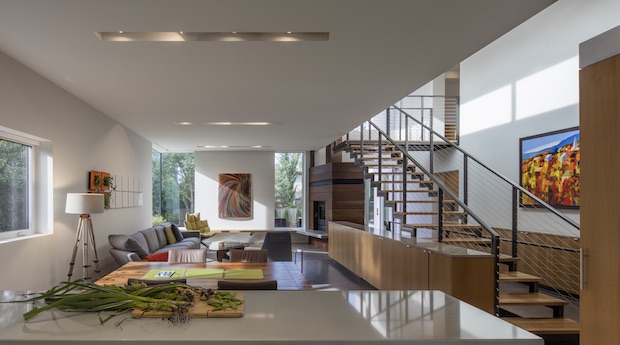 Aging in place was top of mind of the owners of this modern home in Alberta by Ibarra Rosano Design Architects and Jillian Builders. Living areas and the master suite are on the main floor, with guest quarters above. The design can accommodate the later addition of an elevator if needed.
Aging in place was top of mind of the owners of this modern home in Alberta by Ibarra Rosano Design Architects and Jillian Builders. Living areas and the master suite are on the main floor, with guest quarters above. The design can accommodate the later addition of an elevator if needed.
The design played out as two stucco volumes with a vertical Cor-Ten steel-clad connector that delivers a constant glow to the living spaces. “The home’s form had a lot to do with bringing in light and having that light in the places they use the most,” Rosano says. The main living spaces, including a patio and deck, unspool along the south and east, while the garage is on the north, where winter storms come from. The central entry hall/stairwell connector has high clerestories on the south side that bounce light down, even to the basement, which contains the geothermal mechanicals and a playroom for visiting grandchildren.
With the living areas and master suite on the main floor, the clients have the option of aging comfortably in place. And although the entry is a few steps higher than the street, a lift could be incorporated from the garage to the house, if necessary. Because of deep setbacks on all sides of the 75-foot-by-128-foot lot, Rosano stacked two guest rooms and a bath over the garage, stepping them back from the front façade in keeping with the neighborhood scale. Other homes in the neighborhood also have flat roofs, which surprised the architect.
“We assumed a sloped roof made more sense in the snow, but that’s not necessarily so because the snow can serve as an insulator,” says Rosano, whose team designed a flat structure calculated for snow loads and drifts. Exterior stucco is as common in Alberta as it is in Arizona, but “it’s different from what we have in Arizona,” she says. “Theirs isn’t painted and has sand in it with sparkle.” Cor-Ten steel on the connector and garage doors contrasts with the stucco while being durable, low-maintenance, and relatively affordable, she adds. Builder Derek Deibert, president of Jillian Builders, in Edmonton, fitted the garage doors with heavy-duty commercial hardware to handle the added weight.

The frameless corner windows in the kitchen and living room presented another challenge throughout design and construction. “They had to be shored up for three weeks while we waited for the ICF [insulated concrete form] exterior walls to fully cure because there was no structural support for the weight of the roof in the corner,” Deibert says. Those windows bring sunlight and views into critical places, but also control privacy. “The kitchen looks out onto the suburban street, and rather than put a predictable window in the center of the kitchen looking out to the neighbor’s front door, we put windows on the corners so you’re seeing the cedar trees in the neighbor’s yard,” Rosano says. In the living room, the corner window became the husband’s favorite spot for reading the paper, drinking coffee, and soaking in the light and warmth, she adds.
The home’s interior material palette is pale and understated, to reflect light, with pops of color from art, furnishings, and the kitchen’s bright green, back-painted glass backsplash. Flooring on the main level is radiant-heated colored concrete, while the cabinetry and second-story flooring is white oak. Over-troweling the concrete floors when they were almost hard created a marbleized effect, Deibert says.
Throughout design and construction, both builder and architect benefited from the client’s metalworking expertise. His company makes drilling rigs, and he has an extensive metal shop, so he and his employees fabricated most of the metalwork, including the stair structure. Its oak treads, cable railings, and open risers make the compact house feel more expansive. “He was an excellent inventor and problem-solver,” Deibert says. “There were a lot of items that needed to be custom-built or designed from scratch. We would simply meet on site with a pad of graph paper and figure things out.”
While this house is quite different from the defunct Desert Wing design, it addresses similar issues of protection from extreme elements. Whether you’re shaded by an elegant roof in the desert or soaking up the winter sun in Canada, that visceral sense of comfort is a hallmark of A+ architecture—and a quality everyone understands.
Cheryl Weber writes about architecture and design.
Related Stories
Custom Builder
Floodproof on a Floodplain
An impressive addition to the IDEA Home series, the NEWLOOK Experience Home is a master class in engineering and creative design, with builder Michael Freiburger out-thinking an exceptionally tricky lot
Custom Builder
3 Questions Answered About Reliable Energy in Home Construction
Energy expert Bryan Cordill makes a case for why and how propane is an answer to growing concerns about reliability and resilience in home construction
Business
Custom Builder to Talk Color Design with Becki Owens at IBS
At this year's IBS, renowned designer Becki Owens will sit down with host James McClister, editor of Custom Builder, to discuss a variety of topics from basic color play in design to the Allura Spectrum palette, a collection of Sherwin-Williams colors curated for the benefit of pros
Business
PERC Highlights Sustainability and Efficiency at IBS with 'Clean Build Conversations'
Hear from industry standouts Matt Blashaw and Anthony Carrino at this hour-long Show Village event
Custom Builder
Telling a Story That Preserves the Past
Custom builder and historic restoration and preservation expert Brent Hull walks us through the careful details of his Pennsylvania Farmhouse project
Business
Defining Outdoor Living in 2024
Residential experts weigh in on outdoor living trends in new report
Construction
How to Air Seal the Garage
A poorly sealed wall or ceiling between the garage and the main house can let harmful fumes into the living space
Business
Taking Advantage of Incentives Through Weatherization
Industry insider Kristen Lewis walks us through the basics and benefits of weatherization
Custom Builder
2023: A Year of Case Studies
A look back at the custom homes and craftsman details we spotlighted last year
Customer Service
A Smart Home Built Smart
Custom builder August Homes blends efficient, high-tech home automation systems with high-performance, sustainable building strategies



